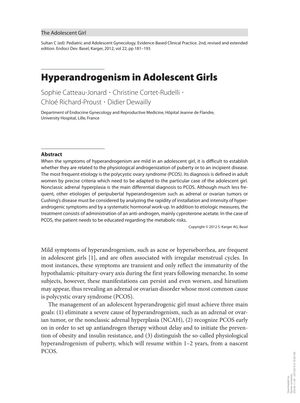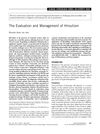Hyperandrogenism in Adolescent Girls
January 2012
in “
Endocrine development
”

TLDR The conclusion is that a thorough approach is needed to diagnose and manage hyperandrogenism in teenage girls, recognizing its major psychological and health effects.
The document from 2012 examines the diagnosis and management of hyperandrogenism in adolescent girls, particularly focusing on conditions like PCOS and NCAH. It details the clinical and laboratory assessments necessary for diagnosis, including hormone measurements and the Rotterdam criteria, which require two of the following three for a PCOS diagnosis: oligo/anovulation, signs of hyperandrogenism, and polycystic ovaries, excluding other causes. The document also discusses the pathophysiology of these conditions, the use of ultrasound and anti-Müllerian hormone for defining polycystic ovaries, and the importance of screening for metabolic syndrome in PCOS patients. It recognizes four PCOS phenotypes and differentiates between PCOS and asymptomatic PCO. Additionally, it covers the clinical presentations of NCAH and other hyperandrogenism causes, and outlines treatment options such as oral contraceptives, antiandrogens, weight loss, and cosmetic treatments. The document concludes that a comprehensive approach is essential for diagnosing hyperandrogenism in adolescents and acknowledges the significant psychological and social impact of PCOS due to its symptoms and long-term health implications.
